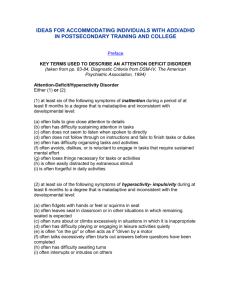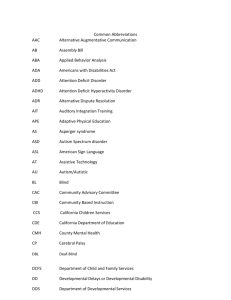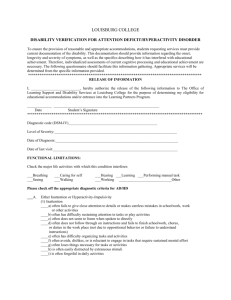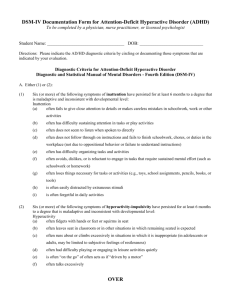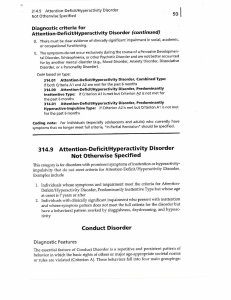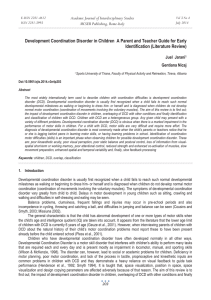DSM IV - Sandy Maynard
advertisement
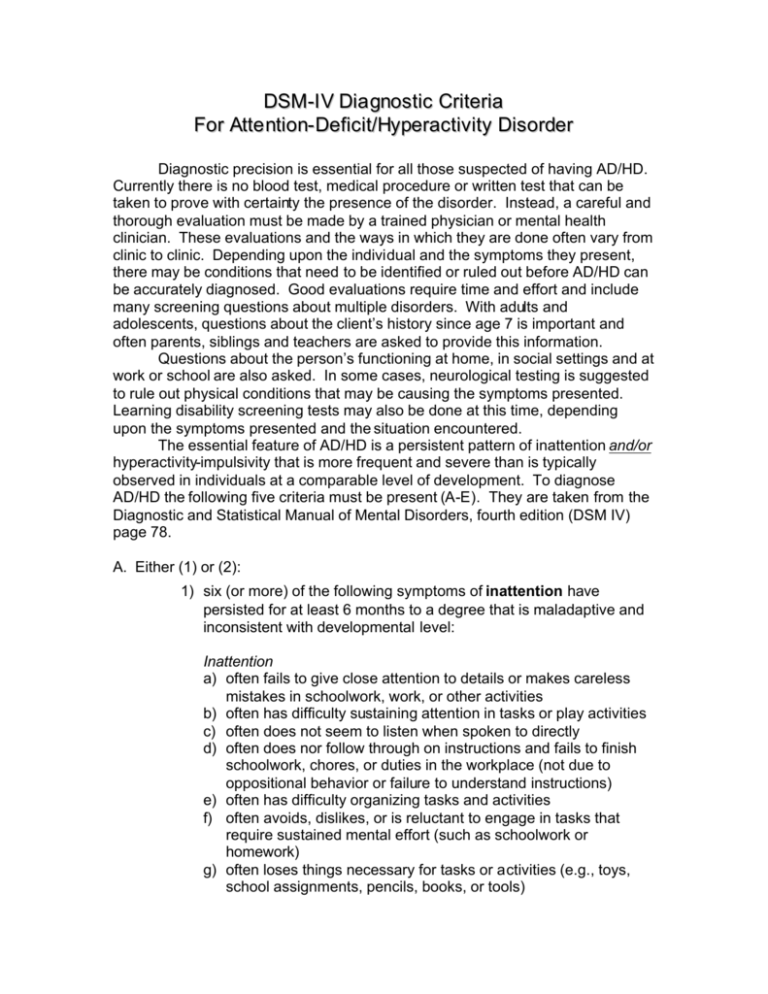
DSM-I V Dia gnostic Criteria For Atte ntion- Deficit/Hyperactivity Disorder Diagnostic precision is essential for all those suspected of having AD/HD. Currently there is no blood test, medical procedure or written test that can be taken to prove with certainty the presence of the disorder. Instead, a careful and thorough evaluation must be made by a trained physician or mental health clinician. These evaluations and the ways in which they are done often vary from clinic to clinic. Depending upon the individual and the symptoms they present, there may be conditions that need to be identified or ruled out before AD/HD can be accurately diagnosed. Good evaluations require time and effort and include many screening questions about multiple disorders. With adults and adolescents, questions about the client’s history since age 7 is important and often parents, siblings and teachers are asked to provide this information. Questions about the person’s functioning at home, in social settings and at work or school are also asked. In some cases, neurological testing is suggested to rule out physical conditions that may be causing the symptoms presented. Learning disability screening tests may also be done at this time, depending upon the symptoms presented and the situation encountered. The essential feature of AD/HD is a persistent pattern of inattention and/or hyperactivity-impulsivity that is more frequent and severe than is typically observed in individuals at a comparable level of development. To diagnose AD/HD the following five criteria must be present (A-E). They are taken from the Diagnostic and Statistical Manual of Mental Disorders, fourth edition (DSM IV) page 78. A. Either (1) or (2): 1) six (or more) of the following symptoms of inattention have persisted for at least 6 months to a degree that is maladaptive and inconsistent with developmental level: Inattention a) often fails to give close attention to details or makes careless mistakes in schoolwork, work, or other activities b) often has difficulty sustaining attention in tasks or play activities c) often does not seem to listen when spoken to directly d) often does nor follow through on instructions and fails to finish schoolwork, chores, or duties in the workplace (not due to oppositional behavior or failure to understand instructions) e) often has difficulty organizing tasks and activities f) often avoids, dislikes, or is reluctant to engage in tasks that require sustained mental effort (such as schoolwork or homework) g) often loses things necessary for tasks or activities (e.g., toys, school assignments, pencils, books, or tools) h) is often easily distracted by extraneous stimuli i) is often forgetful in daily activities. 2) six or more of the following symptoms of hyperactivity-impulsivity have persisted for at least 6 months to a degree that is maladaptive and inconsistent with developmental level: Hyperactivity a) often fidgets with hands or feet or squirms in seat b) often leaves seat in classroom or in other situations in which remaining seated is expected c) often runs about or climbs excessively in situation in which it is inappropriate (in adolescents or adults, may be limited to subjective feelings of restlessness) d) often has difficulty playing or engaging in leisure activities quietly e) is often "on the go" or ofte n acts as if "driven by a motor" f) often talks excessively Impulsivity g) often blurts out answers before questions have been completed h) often has difficulty awaiting turn i) often interrupts or intrudes on others (e.g., butts into conversation or games) B. Some hyperactive-impulsive or i nattentive symptoms that cause impairment were present before age 7 years. C. Some impairment from the symptoms is present in two or more settings (e.g. at school [or work] and at home). D. There must be clear evidence of clinically significant impairment in social, academic, or occupational functioning. E. The symptoms do not occur exclusively during the course of a Pervasive Developmental Disorder, Schizophrenia, or other Psychotic Disorder and are not better accounted for by another mental disorder (e.g., Mood Disorder, Anxiety Disorder, Dissociative Disorder, or a Personality Disorder).
